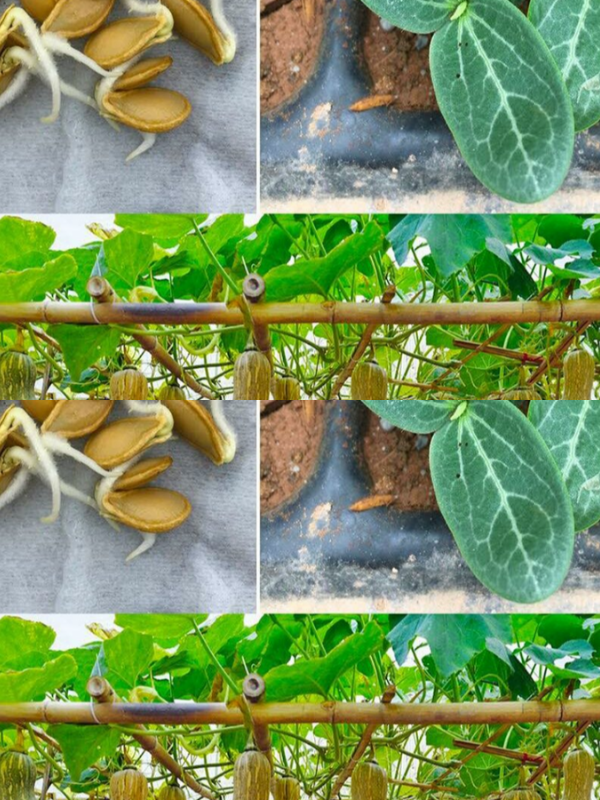Size: Opt for a container with a volume of at least 15 gallons to allow the roots of the pumpkin plant to spread properly. Depth: Soil and planting: Some varieties require more space. Therefore, choose a variety that fits the size of your container. Consider space: choose compact or bushy varieties such as ‘Small Sugar’, ‘Baby Boo’ or ‘Jack Be Little’, which are suitable for growing in pots. Container-friendly varieties: Choosing the right variety of pumpkin: Ensure adequate drainage by drilling holes in the bottom of the container to prevent waterlogging. Drainage: Ensure a depth of at least 18 inches to accommodate the plants’ deep root system. Pumpkin.
Pumpkin seeds in a bowl of
soil mix: Use a rich, well-draining potting mix that contains organic matter. Mix in compost or old manure for extra nutrients. Plant seeds: Sow 2 or 3 pumpkin seeds about 2.5 cm deep in the center of the container. Once they germinate, dilute them until you have the healthiest seedling. Spacing: If you’re sowing multiple seeds, make sure the distance between them is at least 18–24 inches. Irrigation and sunlight: Watering: Keep the soil evenly moist, but not soaked. Water generously and allow the soil to dry slightly between waterings. Sunlight: For optimal growth, make sure your container is in an area that is exposed to at least 6 to 8 hours of sunlight daily. Care and Maintenance: Supports: Place a trellis or support structure near the container as the vines grow. You can gently teach the vines to climb on the support, which will provide better air circulation and prevent rot. Fertilization: Apply every 2-3 weeks in a balanced and slow manner. Dissolve the fertilizer or a half-diluted liquid fertilizer. Pruning: Cut off excess foliage and smaller fruits to redirect the plant’s energy to the main pumpkin. Cut the pumpkin from the branch with pruning shears, leaving a few inches of the stem hanging. a>Harvest: Look for a deep, even color, a sturdy skin, and a dry stem. If you tap on it, the pumpkin should sound hollow. Signs of ripeness: Pumpkins typically ripen in 75–100 days, depending on the variety. Timeline: Harvest: Powdery mildew can affect pumpkins. Ensure good air circulation around the plant and use fungicides if necessary. Diseases: Check the plant regularly for pests such as aphids, pumpkin beetles, or cucumber beetles. For control, use organic insecticidal soap or neem oil. Pests: Pest & Disease Control:
A box full of pumpkins Growing pumpkins in containers requires attention to detail, especially when it comes to soil quality, irrigation, sunlight, and pest control. With proper care and maintenance, even in the smallest of spaces, you can enjoy the rewarding experience of harvesting your own pumpkins at home. Keep in mind that gardening often involves trial and error. So don’t be discouraged by setbacks. Enjoy the process and each attempt will provide you with valuable information for future success.

